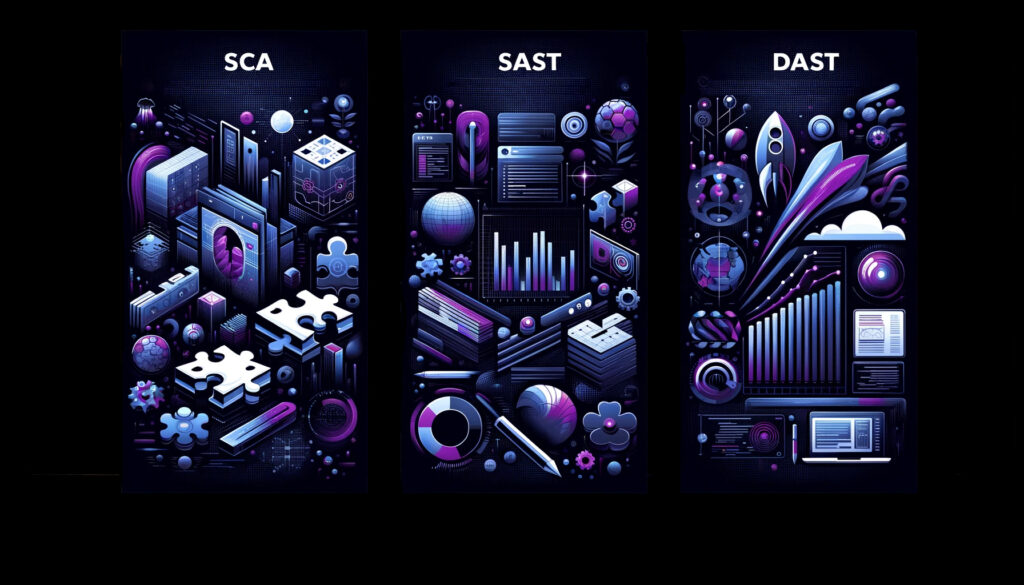
2024-2-4 22:2:46 Author: checkmarx.com(查看原文) 阅读量:16 收藏
-
By Checkmarx Admin
- mins read 9:02

Artificial Intelligence in Static Application Security testing
Static application security testing (SAST) is a powerful tool to find and catch security vulnerabilities early in the application development lifecycle. Scanning static code for weaknesses prior to delivering a finished product enables software developers to deliver stronger, more secure applications to their customers and reduce the risk of cybercriminals exploiting known issues.
SAST does have its limitations. Scans rely on the underlying rules and patterns being accurate and comprehensive to be effective at detecting vulnerabilities. SAST tools can generate false negatives or false positives, which means potential vulnerabilities are wrongly identified or missed completely. Organizations need to fine-tune their SAST tools, customize the rule-sets, and properly validate the findings to ensure they get the best results.
Artificial intelligence (AI) can simplify this work immensely. With the complexity inherent in modern applications, AI-powered SAST solutions can scan applications with far greater precision and accuracy than traditional queries and rule-sets. AI can analyze patterns, structures, and data flows to more accurately identify complex weaknesses that might go unnoticed otherwise. Importantly, these machine learning algorithms can get more accurate over time.
How AI Integrates Into SAST Solutions
AI algorithms can be integrated into static application security testing solutions in a few distinct ways. One way to use AI application security tools is to assist with customized query construction. Queries are powerful ways to test for specific weaknesses in applications but may need to be customized based on distinct organizational requirements. Typically, queries are created manually in static code analysis tools or static application security testing solutions. AI can help create these queries or modify existing queries more effectively without needing a power user to assist.
Using AI in SAST means that queries can be created without needing expertise in a particular query language. Application security testing queries can be created with simple prompts entered into the AI-powered static code analysis tool, ensuring that they are customized and effective at detecting the weaknesses they’re designed to find.
AI algorithms can also automate code analysis. During the development process, AI can identify potential vulnerabilities and easily provide recommendations for how to remediate issues. This contextual AI code analysis empowers organizations to build more secure applications from the ground up and reduce the possibility of attackers exploiting them. SAST with integrated AI can readily detect insecure code and suggest ways to fix it.
AI also helps with prioritization. False negatives and false positives are a major issue with SAST solutions. AI-powered code analysis can more effectively identify the highest priority issues to be resolved, ensuring that developers and AppSec teams resolve the most important weaknesses first.
The Benefits and Challenges of AI-Powered SAST Solutions
There are many benefits and challenges to integrating AI into static application security testing. The most substantial benefits come from productivity enhancements, improving detections, as well as cost savings, and a reduction in false positives. To be more specific:
Accelerated testing — Integrating AI into SAST scanning can accelerate the process of testing application source code. AI-powered tools can scan code faster and more efficiently, making it easier to find vulnerabilities in more complex applications.
Make query creation more efficient — AI algorithms also save time on writing custom queries to test for specific security vulnerabilities; AI-enabled SAST tools can easily generate queries based on simple prompts. This cuts down on the need to understand the specifics of query construction as well, enabling more people to write queries.
Cost savings — AI-powered SAST tools are more cost-effective overall than manual testing. Because they test code faster, they save money by speeding up the security testing process.
Improved developer productivity — Contextual AI code analysis makes developers more productive because they’re able to identify vulnerabilities and possible remediations more quickly. This empowers devs to resolve issues faster, and also potentially make them more readily adopt SAST solutions.
However, there are challenges to integrating AI into SAST scans. The biggest risks to using AI in application security testing focus on the quality of the training data and the need to balance automation with human oversight.
To be more specific, there are issues with potentially limited clarity into how AI code security testing tools make decisions and identify vulnerabilities. AI has the ability to quickly and efficiently scan code and find weaknesses in code. That’s not up for debate. What developers and application security teams may question is how AI decides what is and isn’t a vulnerability. There needs to be trust built with teams through transparent reporting and analysis of the code.
There’s also the possibility of issues in training data. If the AI-enabled application security tool being used wasn’t trained in the correct programming language or has a limited dataset, then there’s a risk of inaccurate vulnerability detection.
Additionally, when integrating AI into SAST scans, there also needs to be human oversight of the results. Ultimately, AI is a tool to make application security and development teams more efficient. They are not a replacement for skilled professionals examining the results.
Conclusion: The Future of AI-Enabled SAST
The power of SAST to identify vulnerabilities isn’t in question. Adding AI into these scanning solutions enables AppSec and dev teams to scan more code, more efficiently, and ultimately when properly deployed, develop better and more secure applications. Pulling AI into application security ultimately does have some risks, but as enterprises build human oversight into the process they can use AI-enabled solutions to become more effective and efficient, overall.
For more information on how Checkmarx has integrated AI into its SAST scanning solution, take a look at our AI-enabled solution now.
如有侵权请联系:admin#unsafe.sh